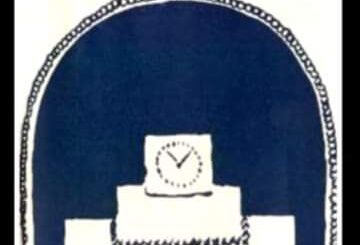Sunday Feature By Projjal Gupta

NAXALBARI MOVEMENT IN INDIA: ITS SOCIO-HISTORICAL ANALYSIS
[Pursuing M.Sc in Economics, Adamas University]
INTRODUCTION: The movement was derived from the peasant uprising of the year 1967 in the area of Naxalbari police station of Darjeeling district, West Bengal. According to Dr. Manmohan Singh (former Prime Minister of India):
“Naxalism is the biggest danger for the internal security of the country.”
The Naxalbari Movement was started under the leadership of Communist Party of India (Marxist) but in the year 1969, they broke off from the CPI(M) party and a new party called, Communist Party (Marxist-Leninist) (CPI-ML) got formed under the leadership of the great Charu Majumder.
BACKGROUND TO THE FORMATION: In the year 1967, a poor peasant named Bimal Kisan was working in his farm when suddenly, his landlord came into the picture and started exploiting him. Even the poor man got killed later on, by the arms-men of the landlord. This incident was witnessed by a majority of the other peasants who finally started the movement. This led to the upsurge of the peasant movement against their landlords, which was headed by the notable leaders- Charu Majumder, Kanu Sanyal and Jangal Santhal.
OBJECTIVE OF THE MOVEMENT: The movement argued that democracy in India was a shame and decided to adopt and firmly follow the strategy of protracted guerrilla warfare, so as to establish communism for the lifetime.
THE MOVEMENT: Naxalites were the common people who demanded for equal social and financial status for each and every citizen residing within the domestic territory of the country. Their ideology was clear i.e., they fought against oppression and exploitation to firmly create a classless society. They indeed worked for the centralization of the power. The movement used forces to snatch away land from the rich owners to gift them to the landless ones; the supporters of the movement used violent means to achieve their political goals. Inspite of the vehement use of preventive detention and other strong measures, adopted by the West Bengal government and backed by the Congress Party, the Naxalbari movement didn’t come to an end. Even, in the later years, it got spread to other parts of the country- Bihar, Andhra Pradesh, Uttar Pradesh, parts of Tamil Nadu and many such.
Conditions that led to the growth of the movement- the movement started in such areas where the place was inhabited by the backward Adivasis; in these areas the sharecroppers were denied the basic rights on the basis of their security of tenants or share in produce, payment of fair wages, and such more; expropriation of resources by the outside powers, forced labour by the money lenders were also common in such areas. All these conditions, finally led to the beginning of such a movement, which got enlisted in the pages of Indian History and will be learnt by all the students of the generations to come.
GOVERNMENT’S APPROACHES & CHALLENGES: Governments took stern action while dealing with the movement; thousands of people got killed in the violence between the Naxalites and the anti-Naxalites; the Human Rights activists criticized the government for violating the constitutional norms while dealing with the Naxalites.
LAWS MADE BY THE GOVERNMENT AFTERWARDS: The laws include- Rehabilitation and Resettlement Policy, 2007 (main aim was to minimize the displacement of people and to promote non-displacing or minimal displacing alternatives); Forest Rights Act, 2006 (granted rights to the weaker sections of the society as well as the traditional forest dwellers); Chhattisgarh Special Public Securities Bill, 2005 (provided the District Magistrates unconditional powers to notify places in which, according to him, unlawful acts have started without any prior notification.
ANALYSIS & CONCLUSION: They are enlisted below –
The government should go to the root cause of this issue and cure it from the grass-root level.
Arms and ammunitions can’t always help the government to win any battle.
Equality should be maintained among people belonging to different sections of the society.
The government should make sure that these oppressed sections get all the basic necessities of life without any default, as fast as possible.
Employment opportunities should also get generated equally in those backward areas.
All round development of the areas should be done without any hesitation.
A class less economy needs to be established.
Thus, the Naxalbari Movement started and gained its momentum, which will never get suppressed as it is the voice of the commons for the demand of their basic rights that not a single political power occupying the throne of the center, can snatch away from them.
REFERENCES
Naxalbari Movement- https://upscwithnikhil.com/article/history/the-naxalbari-movement, Retrieved on 28/02/2023
Naxalbari Movement- https://www.efsas.org/publications/study-papers/an-introduction-to-naxalism-in-india/, Retrieved on 01/03/2023
Naxalbari Movement- https://www.iasexpress.net/naxalism-in-india/, Retrieved on 01/03/2023
Naxalbari Movement- https://blog.ipleaders.in/laws-for-naxalism-in-india-and-its-reforms/, Retrieved on 02/03/2023


















